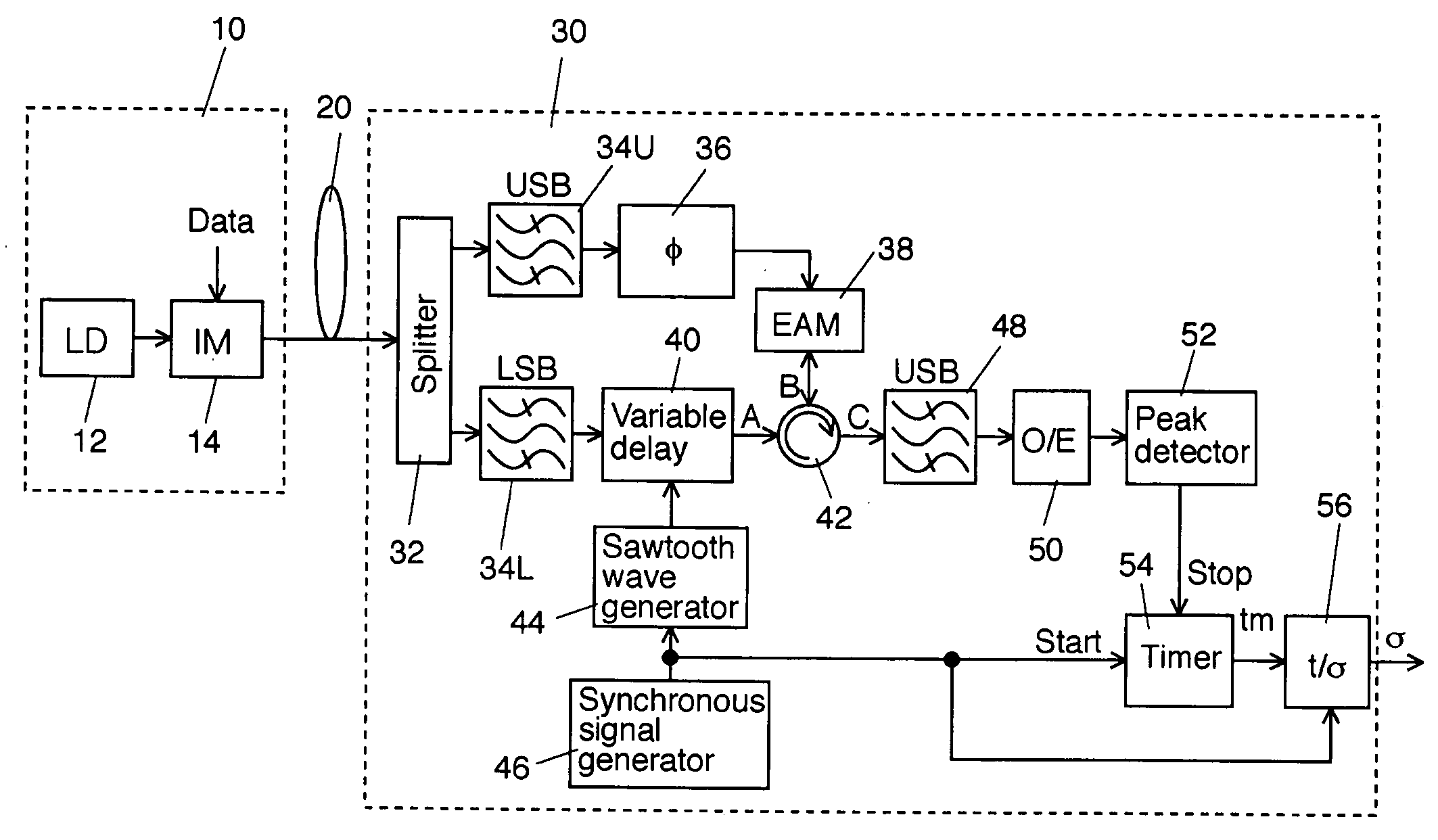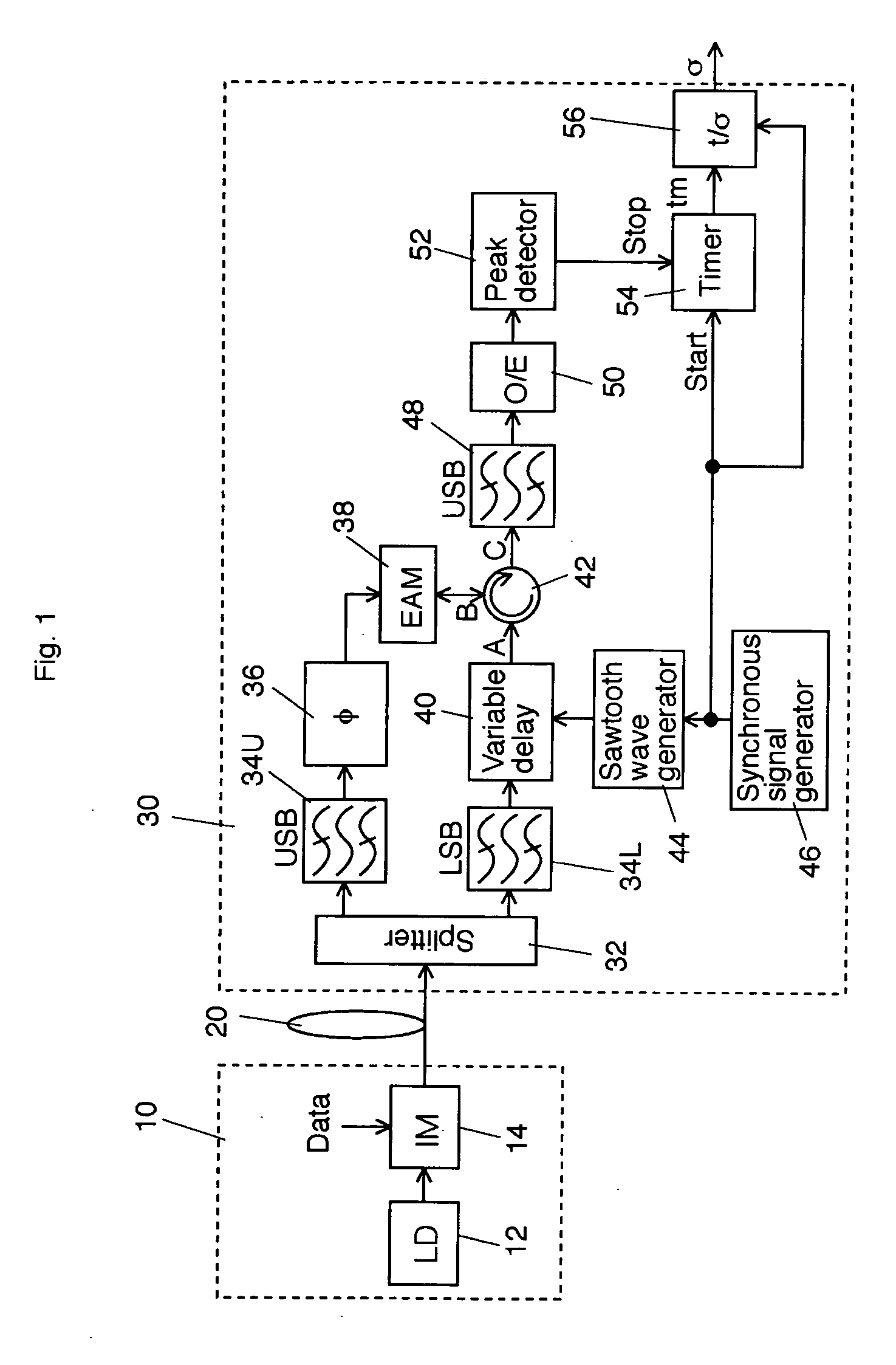Method and apparatus for measuring chromatic dispersion
a technology of chromatic dispersion and chromatic dispersion ring, which is applied in the direction of instruments, optical apparatus testing, structural/machine measurement, etc., can solve the problems of difficult automation of the measurement of the difficult to obtain an accurate amount of chromatic dispersion, and complicated configuration of optical transmitter and optical receiver
- Summary
- Abstract
- Description
- Claims
- Application Information
AI Technical Summary
Benefits of technology
Problems solved by technology
Method used
Image
Examples
Embodiment Construction
[0037] Explanatory embodiments of the invention are explained below in detail with reference to the drawings.
[0038]FIG. 1 shows a schematic block diagram of a first explanatory embodiment according to the invention. A test signal light generator 10 includes a laser light source 12 of a wavelength λc and an intensity modulator 14 to intensity-modulate an optical output from the laser light source 12 with a data. The intensity-modulated signal light from the intensity modulator 14 is input to an optical transmission line 20 as a test signal light. FIG. 2 shows a spectral example of the intensity-modulated signal light to be input to the optical transmission line 20. The horizontal axis expresses frequency and the vertical axis expresses optical intensity. A peak 16C in the center shows an optical carrier of the wavelength λc, a peak 16U on the high frequency side shows an upper side band (USB), and a peak 16L on the low frequency side shows a lower sideband (LSB).
[0039] In this firs...
PUM
| Property | Measurement | Unit |
|---|---|---|
| chromatic dispersion | aaaaa | aaaaa |
| time | aaaaa | aaaaa |
| phase | aaaaa | aaaaa |
Abstract
Description
Claims
Application Information
 Login to View More
Login to View More - R&D
- Intellectual Property
- Life Sciences
- Materials
- Tech Scout
- Unparalleled Data Quality
- Higher Quality Content
- 60% Fewer Hallucinations
Browse by: Latest US Patents, China's latest patents, Technical Efficacy Thesaurus, Application Domain, Technology Topic, Popular Technical Reports.
© 2025 PatSnap. All rights reserved.Legal|Privacy policy|Modern Slavery Act Transparency Statement|Sitemap|About US| Contact US: help@patsnap.com



